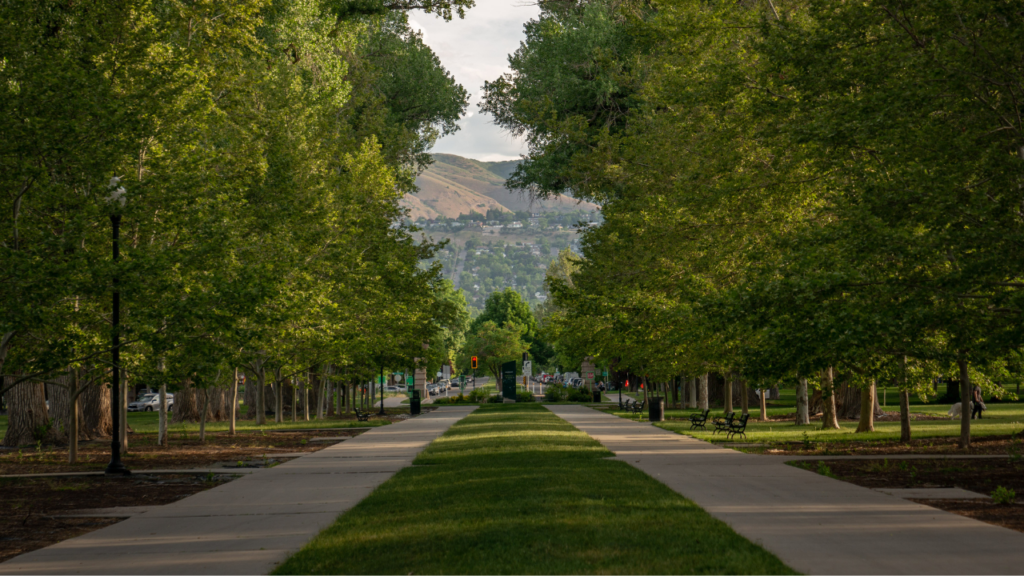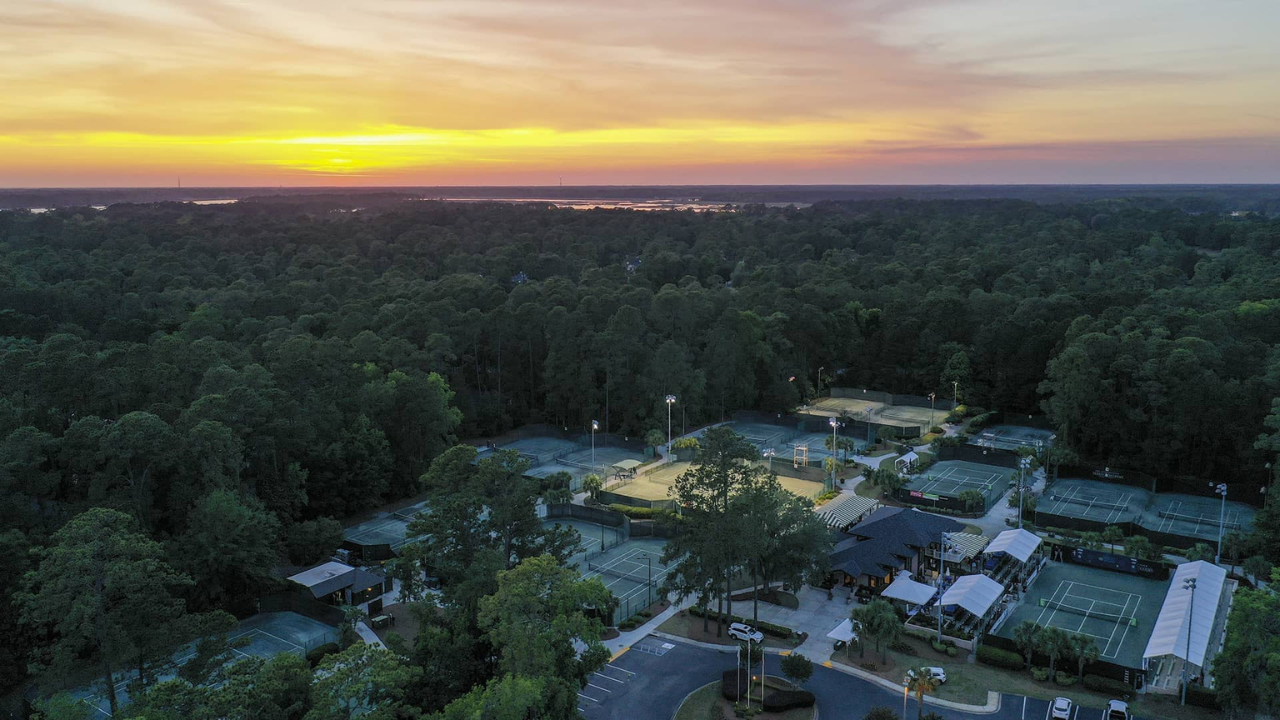St. Louis, Missouri, is a vibrant city known for its rich history, cultural landmarks, and bustling urban life. However, like many cities, St. Louis faces the challenge of the urban heat island effect, where built-up areas experience higher temperatures than their rural surroundings due to human activities and lack of green spaces. Amidst this concrete jungle, Forest Park stands as a vital natural oasis, playing a crucial role in cooling down the city and enhancing the quality of life for its residents.
Spanning over 1,300 acres, Forest Park is one of the largest urban parks in the United States. It is not only a recreational haven but also an ecological powerhouse that contributes to climate regulation, biodiversity conservation, and environmental education. In this article, we’ll explore how Forest Park helps cool down St. Louis, its role in forest conservation, the diversity of forest flora, and its significance in educating the public about the importance of green spaces.
The Urban Heat Island Effect: A Growing Challenge
Before diving into the role of Forest Park, it’s essential to understand the urban heat island effect. This phenomenon occurs when cities replace natural land cover with dense concentrations of pavement, buildings, and other surfaces that absorb and retain heat. As a result, urban areas can become significantly warmer than surrounding rural areas, leading to:
- Increased energy consumption for cooling
- Higher emissions of air pollutants and greenhouse gases
- Heat-related illnesses and discomfort for residents
- Reduced water quality due to warmer runoff
St. Louis, with its dense urban core, is no stranger to these challenges. However, the presence of Forest Park provides a natural solution to mitigate these effects.
Forest Park: A Natural Coolant for St. Louis
Forest Park serves as a green lung for St. Louis, offering a respite from the heat and contributing to the city’s overall climate resilience. Here’s how the park helps cool down the city:
1. Shade and Evapotranspiration
The park’s dense tree canopy provides shade, reducing surface temperatures and offering a cooler environment for visitors. Additionally, trees and plants undergo evapotranspiration, a process where water is absorbed by roots and released as vapor through leaves. This natural cooling mechanism helps lower air temperatures in and around the park.
2. Reducing Heat Absorption
Unlike concrete and asphalt, which absorb and radiate heat, the park’s grassy areas, water bodies, and vegetation reflect sunlight and absorb less heat. This creates a cooler microclimate within the park and its surrounding neighborhoods.
3. Air Quality Improvement
Forest Park’s trees and plants act as natural air filters, absorbing pollutants and carbon dioxide while releasing oxygen. Improved air quality contributes to a healthier and more comfortable urban environment.
4. Stormwater Management
The park’s green spaces and water bodies help manage stormwater runoff, reducing the risk of flooding and preventing the urban heat island effect from being exacerbated by waterlogged surfaces.
Forest Conservation: Protecting St. Louis’ Green Heart
Forest Park is not just a recreational space; it’s a hub for forest conservation efforts. The park’s management prioritizes the preservation and restoration of its natural ecosystems, ensuring that it continues to serve as a cooling agent for the city.
Key Conservation Initiatives:
- Tree Planting and Maintenance: The park regularly plants new trees and maintains existing ones to sustain its canopy cover and enhance its cooling effects.
- Invasive Species Control: Efforts are made to remove invasive plant species that threaten the park’s native flora and biodiversity.
- Habitat Restoration: Wetlands, prairies, and woodlands within the park are restored to support diverse plant and animal species.
- Sustainable Practices: The park employs eco-friendly practices, such as composting and recycling, to minimize its environmental footprint.
These conservation efforts ensure that Forest Park remains a thriving green space that benefits both people and the planet.
The Diversity of Forest Flora: A Living Classroom
Forest Park is home to a rich variety of forest flora, ranging from towering trees to delicate wildflowers. This diversity not only enhances the park’s beauty but also plays a vital role in its cooling functions.
Notable Flora in Forest Park:
- Oak and Hickory Trees: These native trees dominate the park’s canopy, providing shade and habitat for wildlife.
- Wildflowers: Species like coneflowers and black-eyed Susans add color to the park’s meadows and support pollinators.
- Wetland Plants: Cattails and water lilies thrive in the park’s ponds and wetlands, contributing to water filtration and cooling.
- Rare and Endangered Species: The park is a sanctuary for rare plants, such as the Eastern Prairie Fringed Orchid, which is protected under conservation programs.
The park’s flora also serves as a living classroom, offering opportunities for education and research.
Forest Flora Education: Inspiring the Next Generation
Forest Park is a hub for forest flora education, offering programs and resources to teach visitors about the importance of plants and their role in the ecosystem.
Educational Initiatives:
- Guided Nature Walks: Park rangers and volunteers lead walks to teach visitors about tree identification, plant ecology, and conservation.
- Workshops and Classes: The park hosts workshops on topics like gardening, medicinal plants, and seasonal flora changes.
- Interactive Exhibits: The park’s visitor centers feature exhibits on local flora, rare species, and the importance of biodiversity.
- School Programs: Forest Park collaborates with schools to provide hands-on learning experiences for students, fostering a love for nature and science.
Through these initiatives, Forest Park inspires visitors to appreciate and protect the natural world.
Medicinal Plants: Nature’s Pharmacy
Among the park’s diverse flora are several medicinal plants that have been used for centuries for their healing properties. These plants not only contribute to the park’s ecological value but also offer opportunities for education and research.
Examples of Medicinal Plants in Forest Park:
- Echinacea: Known for its immune-boosting properties, this plant is commonly found in the park’s prairies.
- Black Walnut: The bark and leaves of this tree have been used in traditional medicine to treat skin conditions and infections.
- Milkweed: While primarily known for supporting monarch butterflies, milkweed has also been used to treat respiratory ailments.
- Goldenrod: This vibrant plant has anti-inflammatory properties and is often used in herbal remedies.
By highlighting these plants, Forest Park connects visitors to the healing power of nature and the importance of preserving biodiversity.
Rare and Endangered Flora: Protecting St. Louis’ Natural Heritage
Forest Park is home to several rare and endangered plant species, making it a critical site for conservation efforts. Protecting these plants ensures the survival of unique genetic resources and maintains the park’s ecological balance.
Conservation Efforts for Rare Flora:
- Habitat Protection: Specific areas of the park are designated as conservation zones to protect rare species.
- Seed Banking: Seeds from endangered plants are collected and stored to preserve their genetic material.
- Public Awareness: The park educates visitors about the importance of rare plants and the need for their protection.
These efforts underscore Forest Park’s commitment to preserving St. Louis’ natural heritage.
Seasonal Flora Changes: A Year-Round Spectacle
One of the most enchanting aspects of Forest Park is its seasonal flora changes. Each season brings a new palette of colors and textures, offering visitors a dynamic and ever-changing landscape.
Seasonal Highlights:
- Spring: The park comes alive with blooming wildflowers and budding trees.
- Summer: Lush greenery and vibrant flowers dominate the landscape.
- Fall: The park’s trees put on a spectacular display of autumn colors.
- Winter: Evergreen trees and frost-covered plants create a serene winter wonderland.
These seasonal changes not only enhance the park’s beauty but also provide opportunities for education and recreation.

Tree Identification: Connecting People with Nature
Forest Park offers numerous opportunities for tree identification, helping visitors connect with nature and learn about the park’s diverse tree species.
Popular Trees in Forest Park:
- Bald Cypress: Known for its distinctive “knees” and tolerance to wet conditions.
- Red Maple: A fast-growing tree with brilliant fall foliage.
- American Sycamore: Recognizable by its mottled bark and large leaves.
- Dogwood: A small tree with beautiful spring blossoms.
Tree identification programs and signage throughout the park make it easy for visitors to learn about and appreciate these natural wonders.
Conclusion: Forest Park as a Model for Urban Green Spaces
Forest Park is more than just a park; it’s a vital resource that enhances the environmental, social, and economic well-being of St. Louis. By cooling the city, conserving biodiversity, and educating the public, the park demonstrates the immense value of urban green spaces.
As cities around the world grapple with the challenges of urbanization and climate change, Forest Park serves as a model for how nature can be integrated into urban landscapes to create healthier, more sustainable communities. Whether you’re a nature enthusiast, a student, or simply someone seeking a break from the heat, Forest Park offers something for everyone.
So, the next time you visit St. Louis, take a stroll through Forest Park and experience firsthand how this natural oasis helps cool down the city and enrich the lives of its residents.
-
Tips for Navigating the Park During the Great Forest Park Balloon Race

The Great Forest Park Balloon Race, held annually in St. Louis, Missouri, transforms the sprawling 1,300-acre Forest Park into a vibrant hub of activity, drawing over 100,000 spectators to witness a sky filled with colorful hot air balloons. Scheduled for September 20-21, 2025, this free, family-friendly event—featuring the Balloon Glow on Friday and the Race…
-
National Tennis Tournament’s Return to Forest Park Recalls Dwight Davis Legacy

In September 2023, the National Public Parks Tennis Championships returned to St. Louis, Missouri, marking a century since its inception in 1923. Hosted at the Dwight Davis Tennis Center in Forest Park, this milestone event not only celebrated a sporting legacy but also rekindled the memory of Dwight F. Davis—a St. Louis native whose vision…
-
Be the Heart of the Park: Support Forest Park Today

Forest Park stands as a living testament to the power of nature—a sprawling sanctuary where towering trees, delicate wildflowers, and winding trails invite us to pause, breathe, and connect. For generations, this cherished woodland has been more than just a green space; it’s a vital ecosystem, a classroom for discovery, and a source of solace.…



